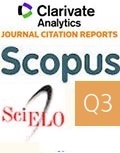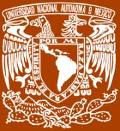Magmatismo de arco en la Cordillera Occidental y en la región norte del Chocó (Colombia) entre el Jurásico y el Mioceno
Arc magmatism in the Cordillera Occidental and the northern region of Chocó (Colombia) between the Jurassic and the Miocene
Gabriel Rodríguez García1,3,*, Tomás Correa Restrepo2,3,4,
1 Consultor privado, Calle 37B sur No. 27D 02 interior 129, 055420, Envigado, Antioquia, Colombia
2 Servicio Geológico Colombiano, Calle 75, No. 79A-51, 50034, Medellín, Antioquia, Colombia
3 Grupo de Investigación Estudios Geológicos Especiales
4 Grupo de Investigación en Amenazas Geológicas
Autor para correspondencia: (G. Rodríguez García) This email address is being protected from spambots. You need JavaScript enabled to view it.
Cómo citar este artículo:
Rodríguez García, G., Correa Restrepo, T., 2025, Magmatismo de arco en la Cordillera Occidental y en la región norte del Chocó (Colombia) entre el Jurásico y el Mioceno: Boletín de la Sociedad Geológica Mexicana, 77(1), A011124. http://dx.doi.org/10.18268/BSGM2025v77n1a011124
Manuscrito recibido: 7 de Febrero, 2024; Manuscrito corregido: 15 de Julio, 2024; Manuscrito aceptado: 30 de Octubre, 2024
ABSTRACT
This study analyzes the compositional and geochronological evolution of magmatism associated with island arc and continental margin events in the Western Cordillera and northern Chocó (Colombia) from the Jurassic to the Miocene. New data are presented, and previous research is reviewed to understand the tectonomagmatic evolution of the region. A Jurassic Middle arc magmatism was identified, forming quartz diorite bodies in the northern Western Cordillera. During the Early Cretaceous, calcic to calc-alkaline gabbro-pyroxenites and tonalites were emplaced in the cordillera and the Caribbean lowlands. Between the Early and Late Cretaceous, an island arc developed along the eastern margin of the cordillera, forming gabbroic intrusions, subvolcanic andesites, basalts, and calcic plagiogranites. Later, heterogeneous stocks and batholiths were followed by calc-alkaline magmatism related to the collision of an oceanic plateau with the continental margin. After the collision, between the Paleocene and Eocene, the Chocó-Panamá Arc formed to the west of the cordillera, characterized by andesitic lavas, subvolcanic bodies, and calcic batholiths. During the Paleocene, arc magmatism on the eastern margin of the Cañasgordas Block produced volcanic rocks with boninitic to calc-alkaline affinity and some porphyritic bodies. Finally, between the Oligocene and Miocene, two arcs developed: one in the southern cordillera, consisting of stocks and batholithic bodies, and another in the north, known as the El Botón Arc, with younger arc magmatism and alkaline stock intrusions. The results of this study provide crucial insights into the geological evolution of the Northern Andes.
Keywords: Colombia, Western Cordillera, Chocó, Magmatic Arcs, Northern Andes.

